How to use UCP in the operating room?
With UCP Flex you can now adapt the dose of ultrasound delivered to your patients

Patient selection is key before realizing a UCP treatment. IOP baseline and glaucoma types are main factors to consider.
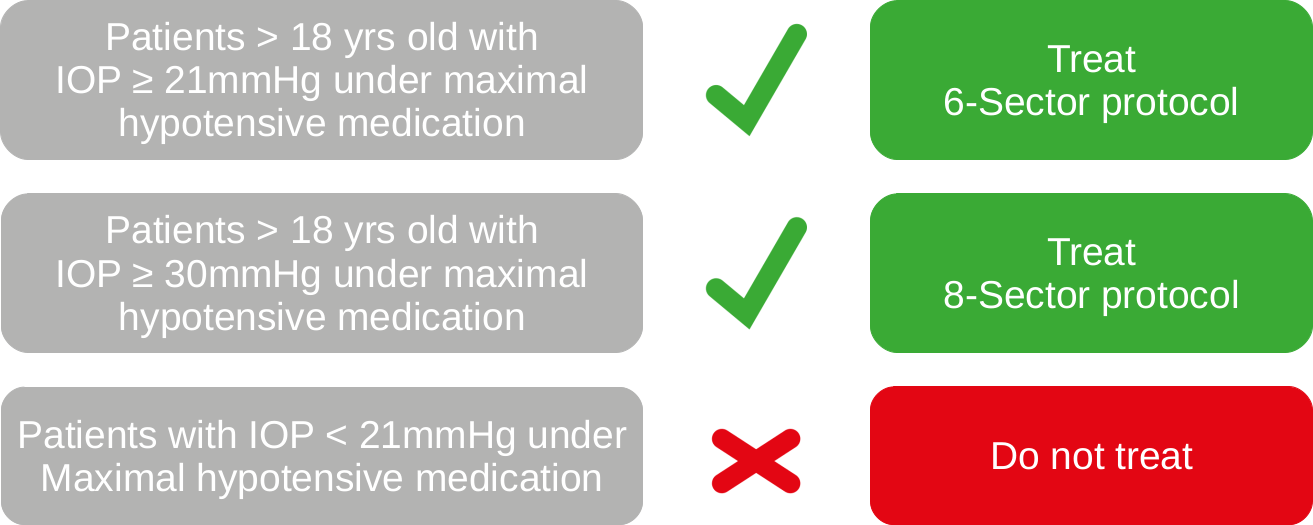
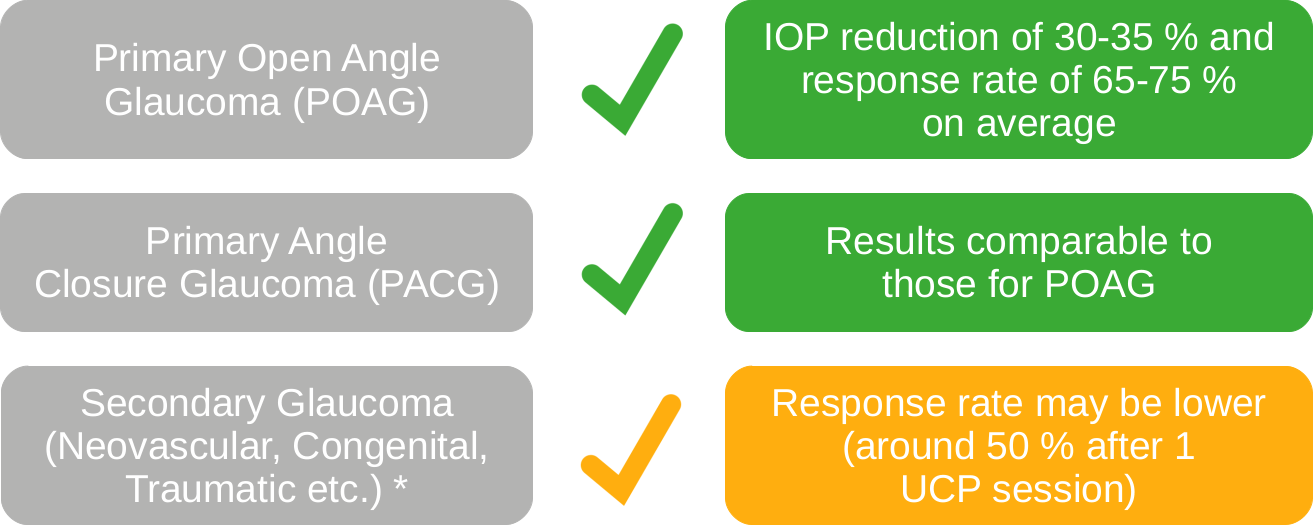
Post-operative anti-inflammatory treatment is very important
To maintain the hypotensive medication during the first month after treatment is key, before adapting the treatment
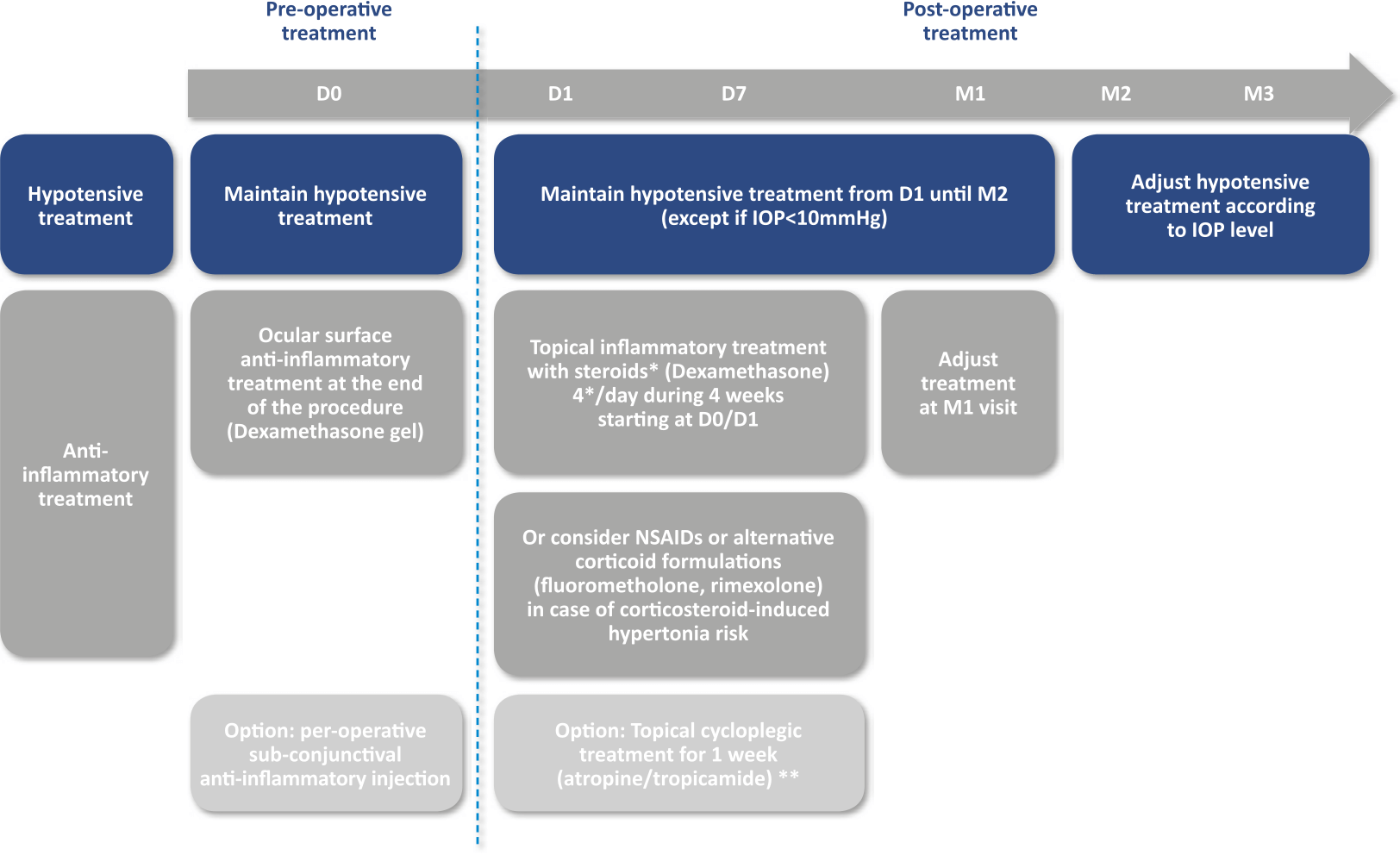
Correct probe sizing is critical for a successful UCP treatment.
Determination is based on WtW and AL with validated measurement devices.
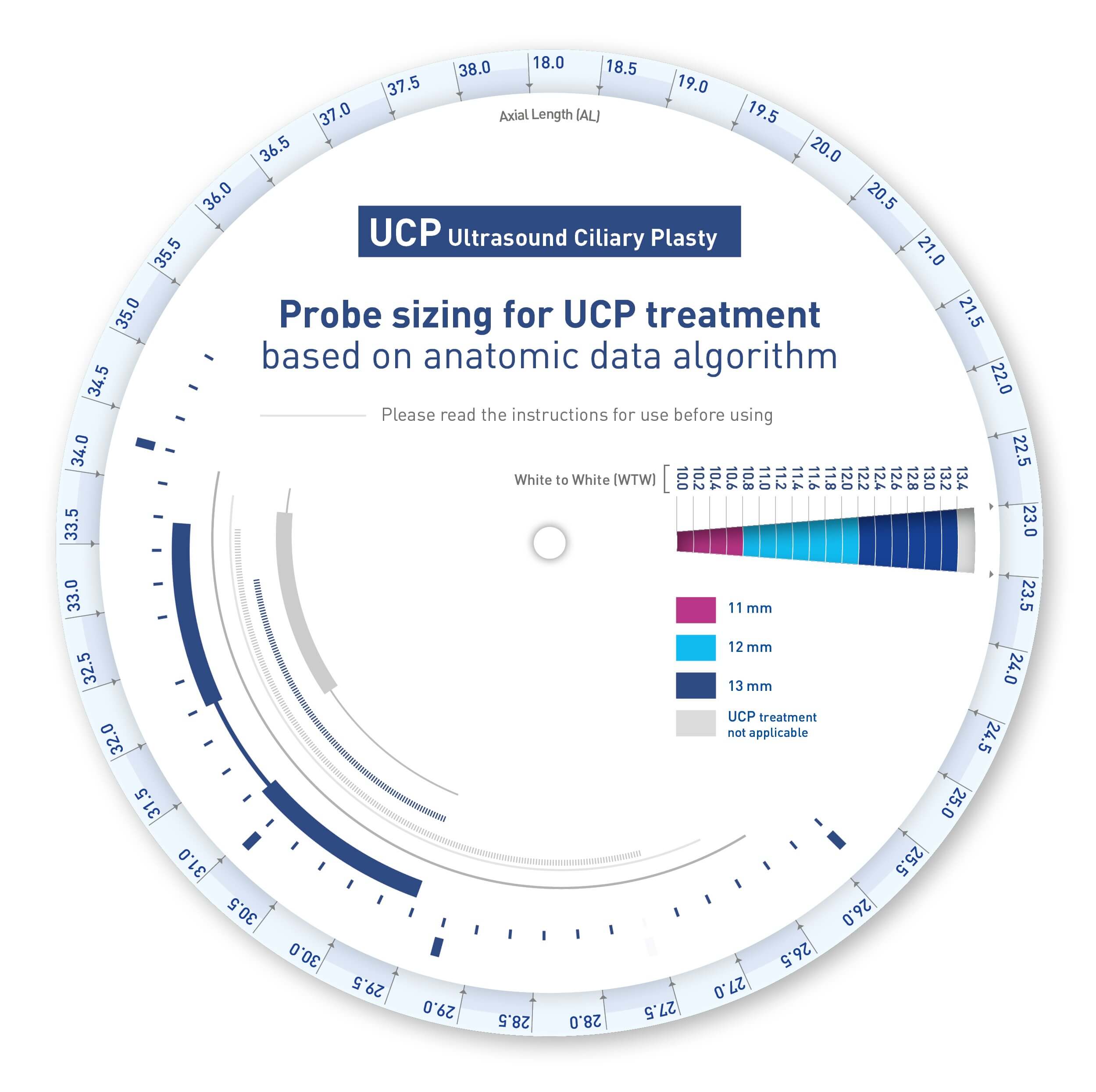
UCP should not be painful if the block is administered properly.
Allow sufficient time for anesthesia to take effect before starting the treatment.
Avoid chemosis, which, if too severe, may prevent successful coupling of the cone on the eye and lead to discontinuing the procedure.
Peribulbar block
Retrobulbar block
Flash / general anesthesia
Sub-Tenon’s block with a blunt needle
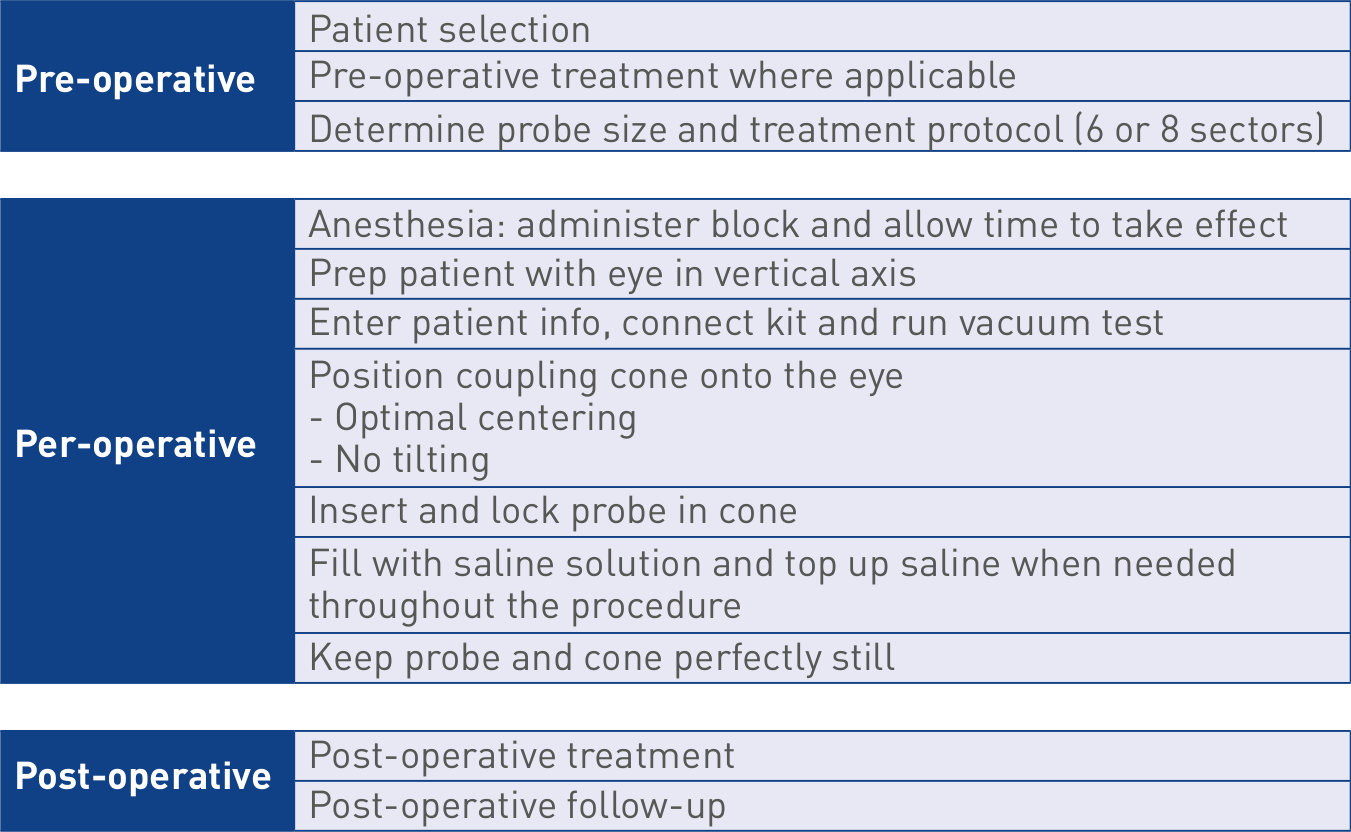
Watch the video on the key UCP procedural steps
With UCP Flex you can now adapt the dose of ultrasound delivered to your patients